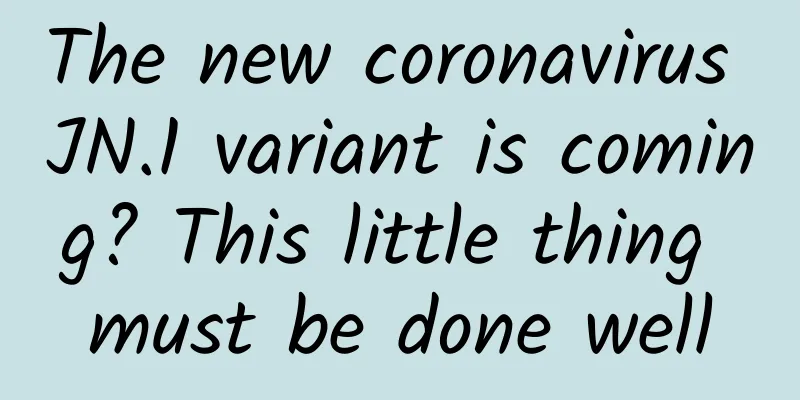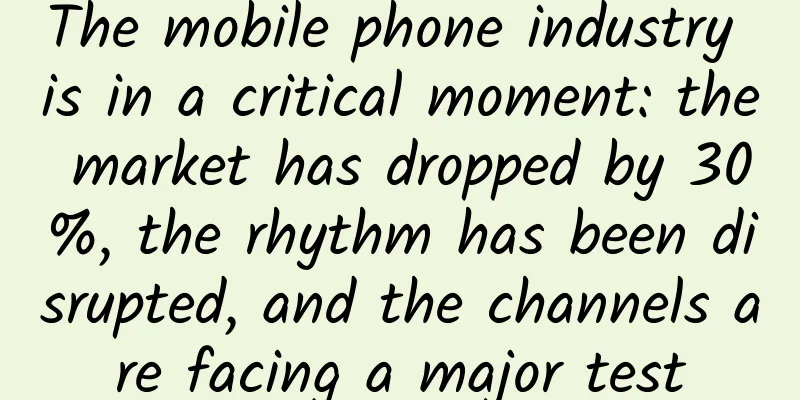The new coronavirus JN.1 variant is coming? This little thing must be done well

|
Recently, a wave of new coronavirus infections has once again swept across many parts of the world. The WHO said that globally, JN.1 has a significant transmission advantage over other prevalent variants , and its infection rate has rapidly increased from 3.3% (October 30 to November 5) to 27.1% (November 27 to December 3). During the same period, the prevalence of JN.1 in Singapore soared from 1.4% to 72.7%, and the prevalence in France also increased significantly from 10.9% to 45.5%. According to the analysis of the World Health Organization, JN.1 is the fastest spreading of the new coronavirus variants currently prevalent in the Americas, Europe and the Western Pacific region. Among them, the prevalence of this variant in the Western Pacific region has risen to 65.6%. Copyright images in the gallery. Reprinting and using them may lead to copyright disputes. The Chinese National Center for Disease Control and Prevention said that as of December 10, a total of seven cases of JN.1 variants had been detected in local cases in China . Although the current prevalence of JN.1 variants in China is extremely low, it cannot be ruled out that JN.1 variants may become the dominant prevalent strain in China due to the influence of international prevalent strains and imported cases. What do we need to know and do about this virus? What are the risks of the new coronavirus JN.1 variant? JN.1 is the second-generation subbranch of the coronavirus Omicron BA.2.86 variant , and is also a subbranch of the BA.2.86 variant with a stronger transmission advantage. Regarding this virus strain, on December 19, 2023, the World Health Organization released a risk assessment, listing the new coronavirus variant JN.1 as a " variant of concern ", but based on the currently available evidence, the additional risk posed by JN.1 to global public health is currently assessed to be low. China's National Center for Disease Control and Prevention said that research shows that there is no significant difference in transmission between the JN.1 and XBB variants. The World Health Organization report shows that the new coronavirus vaccine containing the XBB.1.5 component is still effective against the JN.1 variant. Therefore, under the premise that the population is widely immune to the Omicron variant (including vaccination and natural infection), the transmission ability of the JN.1 variant may be relatively limited. However, the WHO still recommends that people take all available measures to actively prevent infection and severe illness , including: wearing masks properly in crowded, enclosed or poorly ventilated places, improving ventilation, paying attention to coughing etiquette, cleaning hands properly, and getting the new crown vaccine in time. When it comes to prevention, we have to talk about "wearing a mask". Many people are confused about this - "Will I still be infected if I wear a mask?" "Willn't wearing a mask increase the immunity gap (lower the immunity level)?"...... Is this really the case? Should we wear it? Should everyone continue to wear masks? As we all know, masks have had a history of many years before the birth of the new coronavirus, and wearing masks cannot be logically equated with the end of the new coronavirus pandemic. Looking back to before the outbreak of the new crown epidemic, every time the peak season of respiratory diseases came, we would also call on everyone to take precautions. One of the important preventive measures was to wear masks, and they needed to be worn correctly. Even the National Center for Disease Control and Prevention asked everyone to wear masks as soon as possible. 1 What is the purpose of wearing a mask? For healthy people, wearing a mask correctly can reduce the chance of pathogens entering the respiratory tract through droplets, thereby reducing our risk of infection. From the patient's perspective, wearing a mask correctly can not only reduce the chance of the patient spreading pathogens to people around them when sneezing and talking, but also reduce the probability of being exposed to new pathogens and causing mixed infections. Therefore, wearing a mask correctly is a beneficial measure for both others and yourself. 2 Will wearing a mask lead to an 'immunity gap'? The so-called "immunity gap" refers to the obvious gap between the current level of human immunity and the level of immunity sufficient to resist pathogens. The reason for this gap is that, generally speaking, the human body coexists with various pathogenic microorganisms in a dynamic balance. The repeated invasion of pathogens gives our immune system the opportunity to constantly "train". However, when people stop "infecting each other" for a relatively long period of time, such as maintaining social distance, strictly disinfecting the environment, paying attention to hand hygiene, and continuing to wear masks, the human body's immunity will gradually "relax." This gap will occur when people stop taking protective measures and start interacting again, and it will become more obvious when the pathogen continues to upgrade itself. A simple diagram of the COVID-19-related "immunity gap" effect. It can be seen from this that the immunity gap is actually the result of a combination of a series of measures . It is actually difficult to quantify and judge the exact proportion of various measures, but it cannot be said that this is caused by wearing masks. In fact, before the outbreak of the new crown epidemic, medical workers also needed to wear masks at work every day, and they were no more susceptible to infection from certain specific pathogens in the environment than the general public. In principle, the growth of human immunity is indeed trained and developed under the stimulation of pathogens, but this does not mean that we should reject all protective measures and go naked to "fight monsters" , or even not start by practicing by "fighting small monsters", but go straight to "find big monsters and get killed". When the enemy is strong and we are weak, or when the enemy is numerous and we are few, it may be wise to take all kinds of protective measures and develop quietly for a period of time to give our immunity more opportunities to grow. Why should we act alone and act bravely when various pathogens are rampant? 3 In what situations should you wear a mask? 1. When people infected with clear respiratory infectious diseases such as the new coronavirus, influenza, Mycoplasma pneumoniae, and respiratory syncytial virus go to indoor public places or have close contact with others (less than 1 meter, the same below). 2. People with symptoms of respiratory infectious diseases such as fever, cough, runny nose, sore throat, muscle aches, fatigue, etc. go to indoor public places or have close contact with others. 3. When going to medical institutions for medical treatment, accompanying, nursing, or visiting. 4. During the peak period of respiratory infectious diseases, when outsiders enter nursing homes, social welfare institutions, childcare institutions and other places where vulnerable groups gather. 5. During the peak period of respiratory infectious diseases, while public service personnel such as medical staff, catering staff, cleaning staff, security staff, etc. are working in key institutions such as nursing homes, social welfare institutions, childcare institutions, and schools. 4 In what situations is it recommended to wear a mask? 1. When taking public transportation such as airplanes, trains, long-distance buses, ships, subways, and buses during the peak period of respiratory infectious diseases. 2. During the high incidence of respiratory infectious diseases, when entering closed environments and crowded places such as supermarkets, theaters, passenger stations, and box elevators. 3. During the peak period of respiratory infectious diseases, when the elderly, patients with chronic underlying diseases, pregnant women, etc. go to indoor public places. 4. Studying, living or working with anyone who has symptoms of respiratory infectious diseases. 5 In what situations is it not recommended to wear a mask? 1. When doing physical exercise. 2. When in outdoor places such as open squares, parks, etc. 3. Infants and children 3 years old and under (the American Academy of Pediatrics and CDC recently recommended that children over 2 years old can wear masks). References [1] https://news.un.org/zh/story/2023/12/1125162 [2] “Guidelines on the Wearing of Masks by the Public to Prevent Respiratory Infectious Diseases (2023 Edition)”. [3] Coronavirus disease 2019 (COVID-19): Epidemiology, virology, and prevention. UpToDate [4] COVID-19: General approach to infection prevention in healthcare settings. UpToDate [5] Treatment and prevention of the common cold in adults. UpToDate [6] Protect Your Child from COVID-19, the Flu, and Other Illnesses.CDC Planning and production Source: Health Express Author: He Beibei Review | Li Dongzeng, Chief Physician, Department of Infectious Diseases, Beijing Youan Hospital Editor: Wang Mengru |
>>: The probe farthest from human beings is sending a string of repeated garbled codes to the earth
Recommend
How to write a good copy that will not be disliked by users?
Just like posting advertising copy in the circle ...
Why is the existence of “marketing accounts” a good thing?
Teacher Cao said that there are three types of ma...
Is there still a chance as big players are crossing over to make mobile phones?
In today's mobile phone industry, Xiaomi can ...
Tik Tok live streaming experience and skills, what are the skills for Tik Tok live streaming?
With the rise of Douyin live streaming , more and...
Worse than gaining weight! It is the biggest "killer" of middle-aged men's appearance →
Review expert: Peng Guoqiu, deputy chief physicia...
Super bacteria are not "hexagonal warriors", their fatal weakness is... | Technology Weekly
Compiled by Zhou Shuyi and Pingsheng In this &quo...
Analysis of Estee Lauder’s Double 11 marketing strategy!
In the fiercely competitive beauty industry, majo...
Jetta, Corolla, the old friend who accompanied you through thousands of mountains and rivers, is really old now
Perhaps in the near future, we will hardly see Je...
They are most afraid of you going to the hospital...
“As long as you can hold it in, there is no need ...
Get 10,000+ users in 7 days, with a conversion rate of over 50%. You only need to do 3 things to achieve group fission
% ignore_pre_1 % When talking about traffic now, t...
Where do aflatoxins hide?
Aflatoxin can cause liver cancer and some other c...
[Community Taobao Affiliate Incubation] A detailed explanation of Taobao Affiliate sales and monetization methods
Speaking of community Taobao, this is actually th...
In the midst of the unprecedented New Year's Eve haze, we have 8 exclusive secrets for operators
Today is January 4th, the second day after return...
The entire process of building and optimizing information flow advertising accounts
Too little exposure and no sales? How to set a re...
A stool was sold for 7,900 yuan, claiming to be able to cure COVID-19. A case has been filed for investigation!
Recently, on the streets of Shenyang, Liaoning, m...






![[Bugly practical sharing] Android APP quick pad implementation](/upload/images/67ebde9e9f695.webp)


